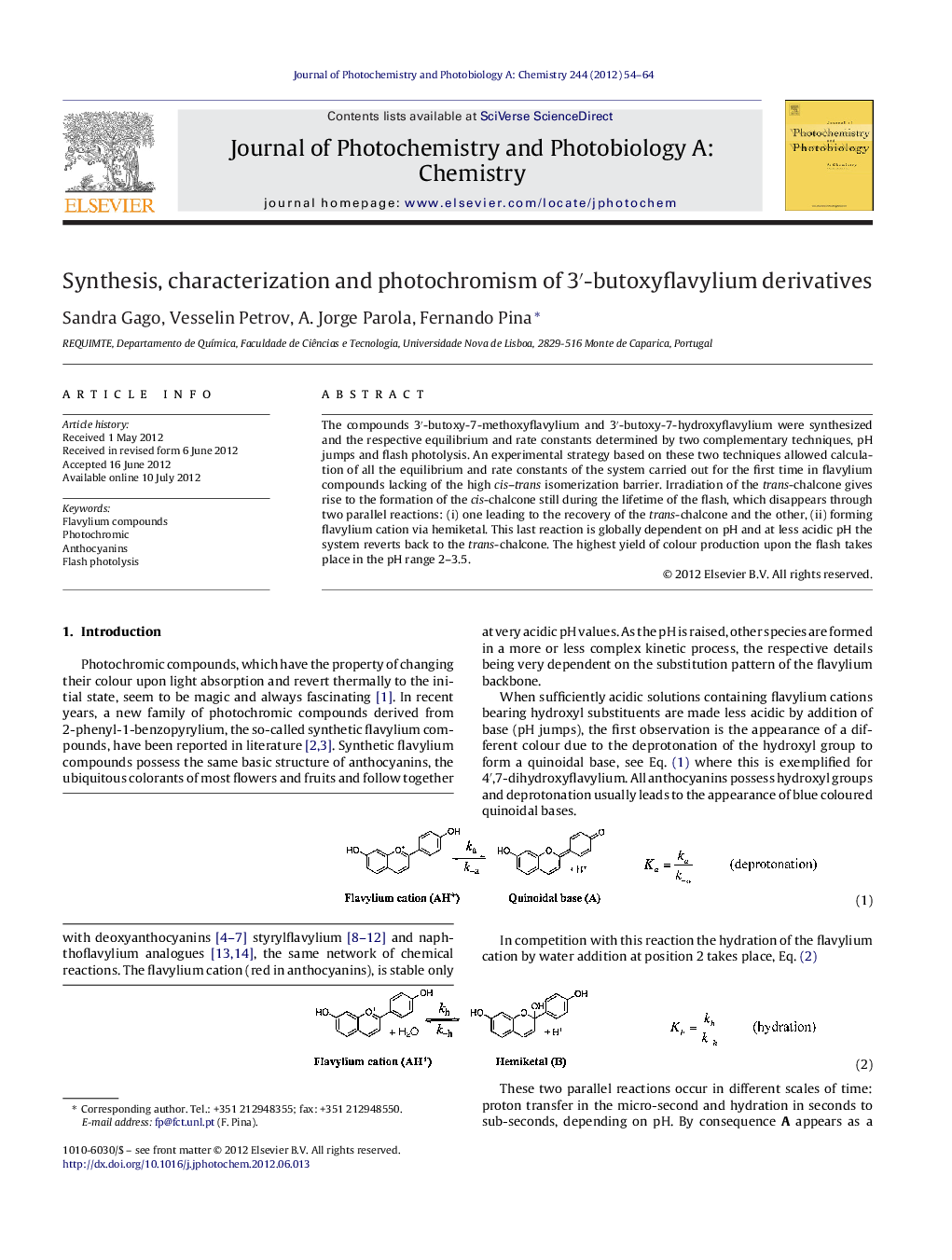| کد مقاله | کد نشریه | سال انتشار | مقاله انگلیسی | نسخه تمام متن |
|---|---|---|---|---|
| 26928 | 43987 | 2012 | 11 صفحه PDF | دانلود رایگان |

The compounds 3′-butoxy-7-methoxyflavylium and 3′-butoxy-7-hydroxyflavylium were synthesized and the respective equilibrium and rate constants determined by two complementary techniques, pH jumps and flash photolysis. An experimental strategy based on these two techniques allowed calculation of all the equilibrium and rate constants of the system carried out for the first time in flavylium compounds lacking of the high cis–trans isomerization barrier. Irradiation of the trans-chalcone gives rise to the formation of the cis-chalcone still during the lifetime of the flash, which disappears through two parallel reactions: (i) one leading to the recovery of the trans-chalcone and the other, (ii) forming flavylium cation via hemiketal. This last reaction is globally dependent on pH and at less acidic pH the system reverts back to the trans-chalcone. The highest yield of colour production upon the flash takes place in the pH range 2–3.5.
Irradiation of the trans-chalcone (Ct) leads to the cis-chalcone (Cc), which can revert back to the initial Ct or forward to the formation of the coloured flavylium cation, AH+. The balance between the two reactions is controlled by the proton concentration. The system is thermally reversible defining a photochromic system.Figure optionsDownload as PowerPoint slideHighlights
► The photochemistry of 3′-substituted flavylium compounds is studied for the first time.
► A new strategy taking profit from pH jumps and a complete set of flash photolysis experiments allows the calculation of all network constants.
► A complete picture of the thermodynamics and kinetic behaviour is obtained for a flavylium lacking the cis–trans isomerization barrier.
► The slow appearance of Ct from AH+ could result from the high cis–trans isomerization barrier or from the small fraction of Cc available.
Journal: Journal of Photochemistry and Photobiology A: Chemistry - Volume 244, 15 September 2012, Pages 54–64